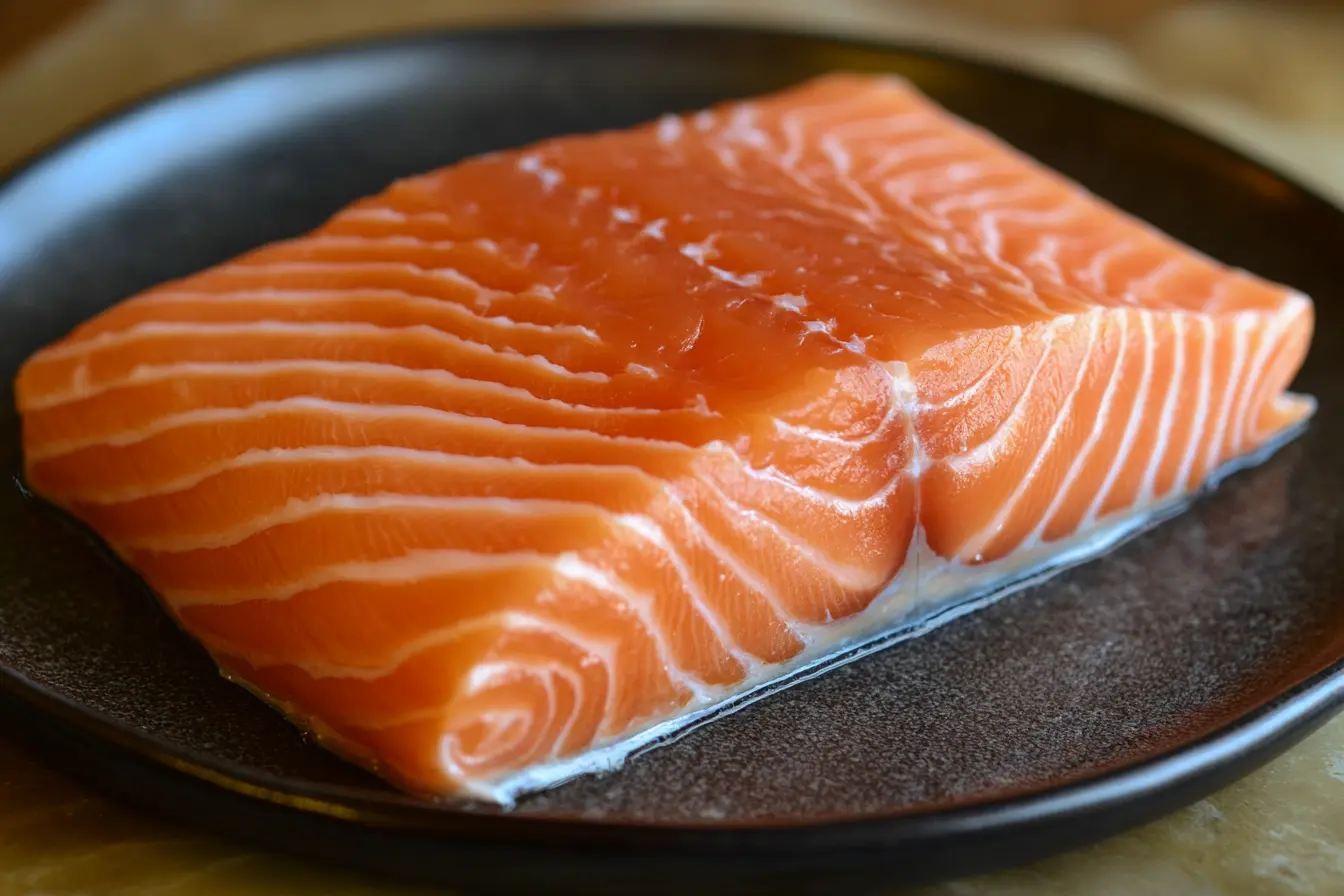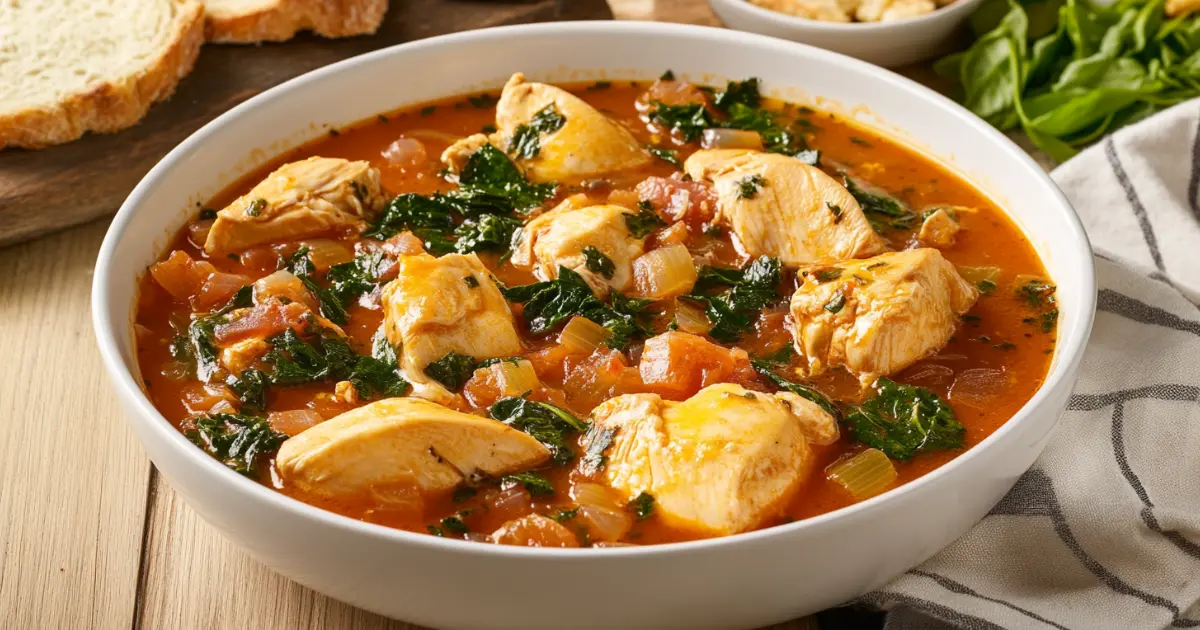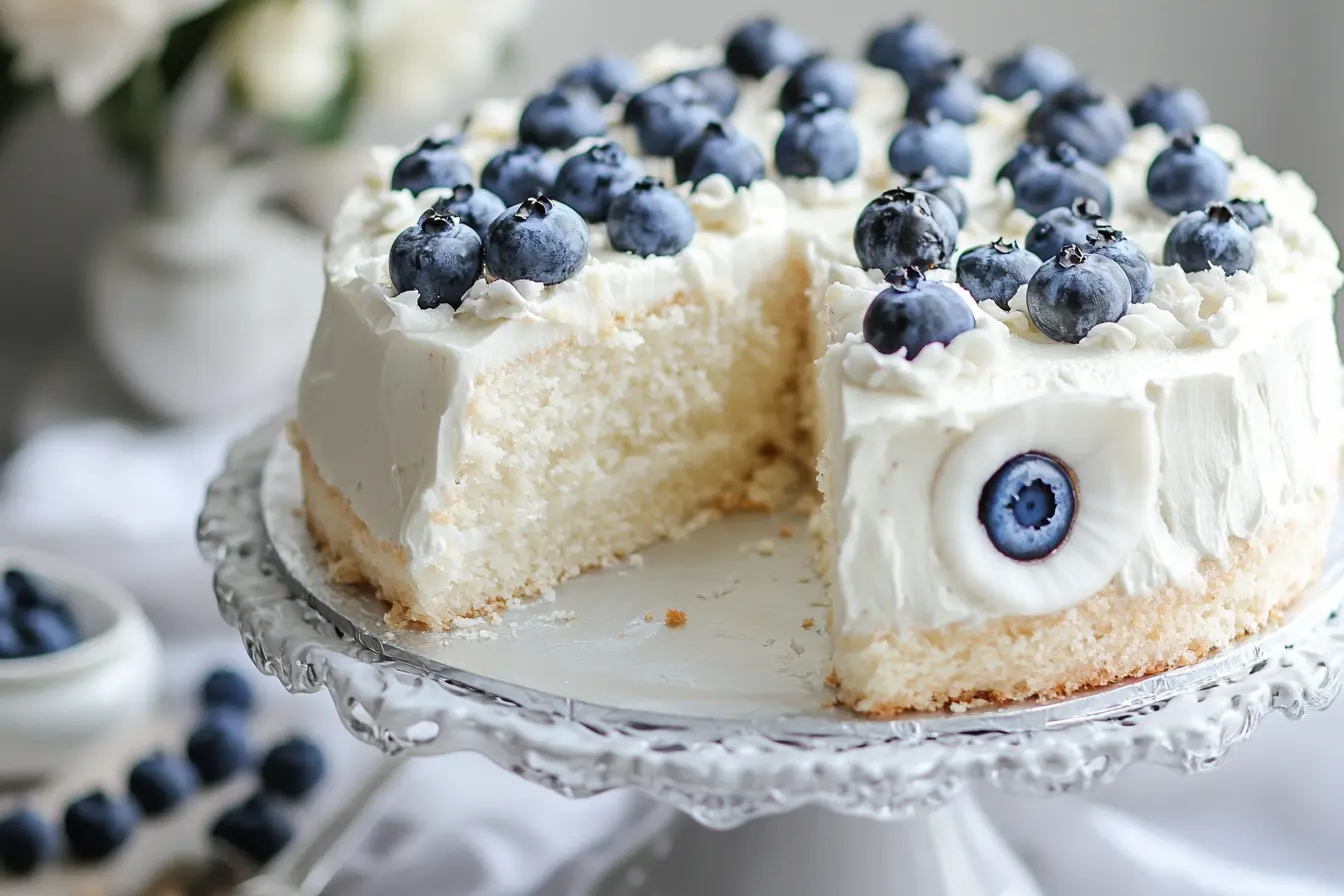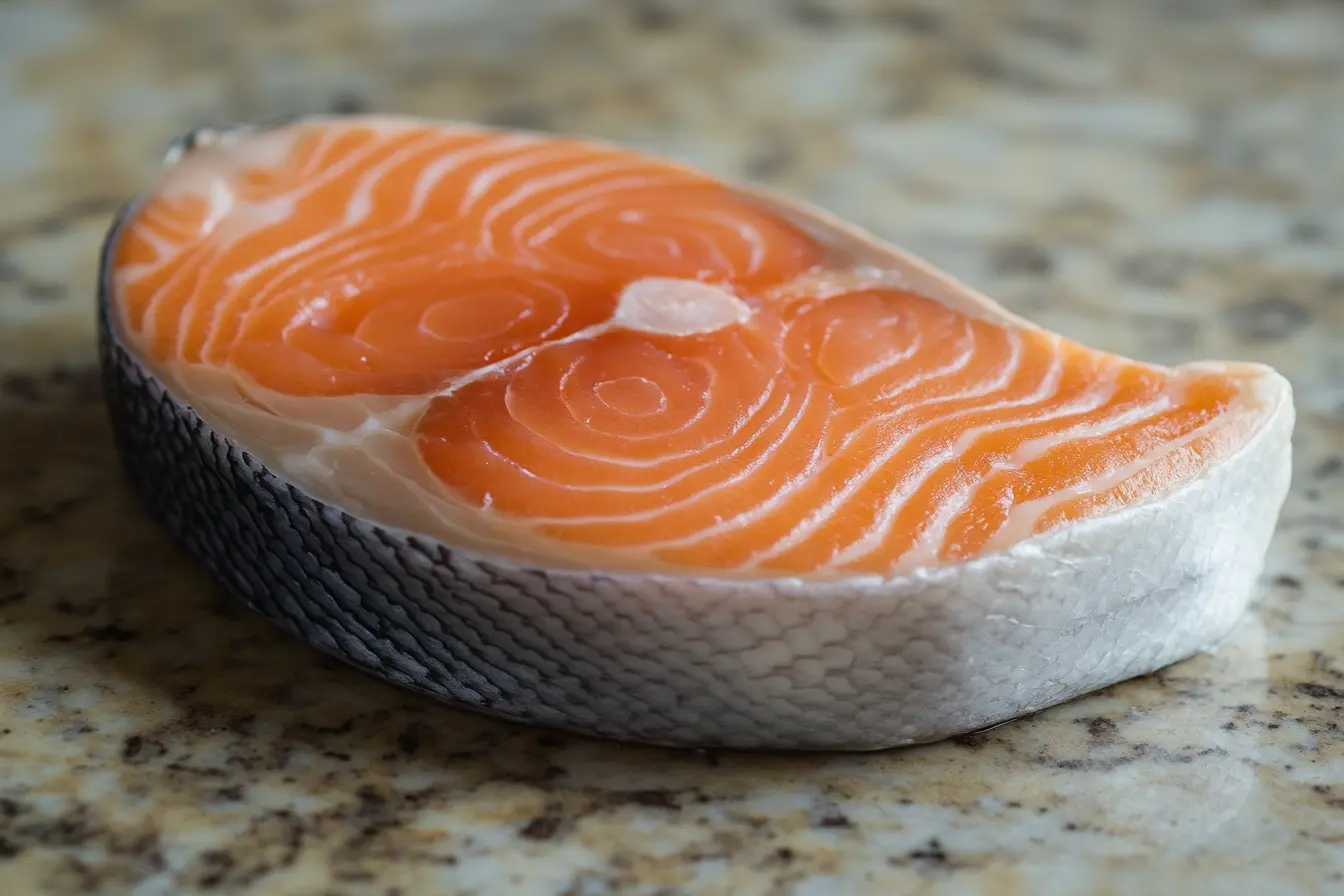Salmon is one of the most beloved and nutritious types of fish. It’s packed with protein, omega-3 fatty acids, and essential vitamins. A 1 lb salmon steak is a perfect portion size for a single meal. It offers heart-healthy benefits and an exceptional flavor profile that works well with various cooking methods. Whether you love seafood or are new to cooking salmon, mastering the preparation of a salmon steak will elevate your culinary experience.
In this guide, we’ll cover everything you need to know about salmon steaks. Not only will we explore their nutritional benefits and best cooking techniques, but we will also offer tips on seasoning, provide internal links to other related recipes, and answer frequently asked questions. By the end, you’ll feel well-equipped to enjoy your salmon steak at its best.
What is a 1 lb Salmon Steak?
A salmon steak is a thick, cross-sectional cut that typically includes the bone. This bone-in structure helps retain moisture during cooking, resulting in a juicy and flavorful meal. A 1 lb salmon steak serves one to two people, depending on appetite.
Unlike fillets, steaks hold up well to different cooking methods. They maintain their shape, making them perfect for grilling, searing, or baking. For those wondering about the right oils for cooking salmon, check out this guide on choosing the best cooking oil for health.
Health Benefits of Salmon
Salmon provides numerous health benefits. For instance, it is known for its high content of omega-3 fatty acids, which are essential for heart health, brain function, and reducing inflammation. By including salmon in your diet, you can lower your risk of heart disease, improve cognitive function, and support joint health.
Omega-3 Fatty Acids
The omega-3 fatty acids in salmon are crucial for reducing inflammation, supporting brain health, and protecting against cardiovascular disease. Moreover, these fatty acids promote eye health, making them an important nutrient for overall well-being. According to the American Heart Association, including omega-3s in your diet can improve heart health and reduce the risk of heart disease.
Protein Content
One 1 lb salmon steak contains around 50-60 grams of high-quality protein. Protein is vital for muscle repair and growth, so adding salmon to your diet ensures that you’re consuming a rich source of this essential nutrient.
Vitamins and Minerals
Salmon is also rich in essential vitamins and minerals:
- Vitamin D: Supports bone health and calcium absorption.
- Vitamin B12: Vital for energy production and nerve function.
- Selenium: Aids in immune support and thyroid function.
For more insights into the nutritional aspects of different cooking oils, read this comparison of healthy cooking oils. This article explores key differences in oils and their uses in everyday cooking.
Types of Salmon Steaks
Several varieties of salmon are available in markets, each with unique flavors and textures. Your choice of salmon steak depends not only on your flavor preferences but also on sustainability considerations.
Atlantic Salmon
- Flavor: Mild and rich, with a higher fat content.
- Sourcing: Typically farmed, leading to consistent size and texture. However, farmed salmon may not be as sustainable as wild-caught varieties.
- Cooking Suggestions: Works well for grilling or baking due to its high fat content, which keeps it moist during cooking.
Coho Salmon
- Flavor: Milder than Sockeye with a firmer texture.
- Sourcing: Wild-caught in the Pacific, making it more sustainable.
- Cooking Suggestions: Perfect for grilling or broiling.
Sockeye Salmon
- Flavor: Bold, rich, and robust, with a bright red color.
- Sourcing: Wild-caught in the Pacific, Sockeye is often considered a sustainable choice.
- Cooking Suggestions: Ideal for grilling or broiling but can dry out quickly due to its lower fat content. Therefore, be mindful of cooking times to prevent dryness.
King Salmon (Chinook)
- Flavor: Rich, buttery, and full-bodied.
- Sourcing: Wild-caught in the Pacific, though sustainably farmed options are also available.
- Cooking Suggestions: Perfect for roasting or grilling, and its high fat content makes it difficult to overcook. As a result, King Salmon is often a top choice for many chefs.
Best Cooking Methods for 1 lb Salmon Steaks
Knowing how to cook a 1 lb salmon steak properly is key to getting the best texture and flavor. Below, we’ll explore the top methods for preparing salmon steaks.
Oven-Baked Salmon Steaks
Baking is an easy and healthy way to cook salmon steaks. It requires minimal oil and ensures even cooking.
- Preheat the oven to 375°F (190°C).
- Place the salmon steak on a parchment-lined baking sheet.
- Drizzle with olive oil and season with salt, pepper, and lemon slices.
- Bake for 12-15 minutes, until the internal temperature reaches 145°F.
- Garnish with fresh herbs such as dill or parsley before serving.
Grilled Salmon Steaks
Grilling imparts a smoky, charred flavor to your salmon steaks.
- Preheat the grill to medium-high heat.
- Brush the grill with oil to prevent sticking.
- Season the steak with olive oil, salt, and pepper.
- Grill for 5-7 minutes on each side, until the flesh is opaque and slightly firm.
For best results, always allow the grill to fully preheat before adding the salmon.
Pan-Seared Salmon Steaks
Pan-searing produces a crispy, golden-brown crust while keeping the inside tender. This method is ideal for achieving a restaurant-quality texture at home.
- Heat olive oil in a skillet over medium-high heat.
- Season the salmon steak with salt and pepper.
- Sear for 4-5 minutes on each side, basting with garlic butter for added flavor.
Sous Vide Salmon Steaks
Sous vide cooking allows for precise control over temperature, ensuring that your salmon is evenly cooked.
- Preheat your sous vide machine to 125°F (52°C).
- Season the salmon with herbs, lemon, and olive oil, then vacuum-seal it.
- Cook for 45 minutes to 1 hour.
- Finish by searing the salmon in a hot pan for 1-2 minutes on each side.
Poached Salmon Steaks
Poaching salmon keeps it light and flavorful without adding oil.
- Simmer water or broth with aromatics like garlic and lemon slices.
- Place the salmon steak in the simmering liquid.
- Poach for 8-10 minutes until cooked through.
For a lighter touch, poaching is the way to go. To explore more about healthy poaching techniques, you can refer to this poaching guide.
Seasoning and Marinating Salmon Steaks
Salmon is versatile and pairs well with many flavors. Thus, it’s easy to experiment with seasoning and marinades.
Simple Seasoning
- Salt and Pepper: Classic and effective.
- Lemon and Herbs: Dill, parsley, and thyme complement the salmon well.
- Spices: Paprika, cayenne, or red pepper flakes can add a kick.
Marinades for Salmon
- Citrus and Garlic: Olive oil, lemon juice, garlic, and herbs for a tangy taste.
- Soy-Ginger: A savory combination of soy sauce, ginger, and honey.
- Maple-Mustard: A sweet and tangy glaze that caramelizes during cooking.
Recipe: Baked Salmon Steak with Lemon and Dill
Here’s a simple recipe for baked salmon steaks.
Ingredients:
- 1 lb salmon steak
- 2 tablespoons olive oil
- 1 lemon, sliced
- Salt and pepper
- Fresh dill for garnish
Instructions:
- Preheat the oven to 375°F.
- Place the salmon steak on a baking sheet lined with parchment paper.
- Drizzle with olive oil and season with salt and pepper.
- Lay lemon slices on top for extra flavor.
- Bake for 12-15 minutes or until the internal temperature reaches 145°F.
- Garnish with fresh dill before serving.
For more great ideas on baking salmon, check out this detailed guide on baked salmon.
Serving Suggestions for Salmon Steaks
A well-cooked 1 lb salmon steak pairs beautifully with a variety of sides and sauces.
- Roasted Vegetables: Asparagus, Brussels sprouts, or sweet potatoes complement the richness of salmon.
- Whole Grains: Brown rice, quinoa, or couscous for a balanced meal. These grains add fiber and texture to the dish.
- Salads: A fresh salad with mixed greens, avocado, and citrus vinaigrette provides a refreshing contrast to the richness of the salmon.
- Sauces: Lemon butter, dill cream, or garlic aioli elevate the flavor of the dish.
Where to Buy 1 lb Salmon Steaks
When selecting salmon, prioritize freshness and quality. Fresh, wild-caught salmon offers the best flavor. However, frozen salmon is also a good option.
Fresh Salmon
- Fish Markets: Visit local markets or farmers’ markets for the freshest salmon.
- Grocery Stores: Many supermarkets offer both fresh and frozen options.
- Online Retailers: Several companies deliver high-quality seafood directly to your door.
FAQs
How long should you bake a 1 lb salmon steak?
Bake for 12-15 minutes at 375°F, checking for an internal temperature of 145°F.
Can you cook salmon steaks from frozen?
Yes, but increase the cooking time by 50%. Always use a meat thermometer to ensure the internal temperature reaches 145°F.
What’s the best way to season salmon steaks?
A mix of olive oil, salt, pepper, and lemon slices works well. Herbs like dill or thyme, along with garlic or mustard, can enhance the flavor.
How do you prevent salmon steaks from sticking to the grill?
Brush the grill grates with oil and preheat it properly. Allow the salmon to cook undisturbed for a few minutes to form a natural crust that prevents sticking.
Conclusion
Salmon steaks are a versatile, nutritious choice for any meal. Whether you bake, grill, or pan-sear them, 1 lb salmon steaks offer a flavorful, healthy option. By mastering different cooking techniques and experimenting with seasonings, you’ll enjoy delicious salmon dishes with ease.
If you’re ready to explore other culinary ideas, be sure to check out cheesy garlic zucchini steaks or how to make canned loaded potato soup better, both of which pair wonderfully with salmon.




